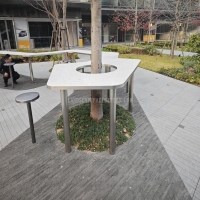Welcome to the website for landscape facilities products and knowledge.
How does the table’s design support or hinder the use of personal or team-based creativity tools?
The fundamental design of a table serves as more than just a surface for placing objects; it actively shapes how individuals and teams engage with creativity tools. A table's physical characteristics—its dimensions, shape, material, and technological integrations—can either foster an environment ripe for innovation or create significant barriers to the creative process. For personal creativity, a well-designed table provides a dedicated, organized space that minimizes cognitive load, allowing the user to focus deeply. An ergonomic height and sufficient personal space are crucial for tools like sketching tablets, physical prototypes, or detailed mind-mapping on paper. Conversely, a cluttered or poorly sized surface can hinder this flow, forcing the individual to constantly rearrange tools rather than engage with them.
In team-based settings, the table's role becomes exponentially more critical. Large, round or oval tables, for instance, promote equality and open sightlines, ideal for collaborative digital whiteboarding sessions or design thinking workshops where every participant's input is valued. Rectangular tables, while traditional, can unintentionally create a hierarchy, potentially stifling contributions from members at the ends. The integration of technology, such as built-in power outlets, wireless charging pads, and seamless connectivity ports, directly supports the use of digital creativity tools like shared tablets and laptops, preventing the friction of dying batteries and tangled cords.
Furthermore, modular tables that can be easily reconfigured support agile creativity, allowing a team to shift from a large group brainstorming session to smaller, focused breakout groups without disruption. Mobile or standing-height tables cater to dynamic, active brainstorming sessions, aligning with the physical energy that often accompanies creative breakthroughs. Ultimately, a table is not a passive piece of furniture but an active component of the creative ecosystem. Its design either consciously supports the workflows of modern creativity tools by facilitating access, collaboration, and focus, or it unconsciously hinders them through rigid form, inadequate space, and a lack of necessary integrations. The most effective tables are those designed with intentionality, anticipating the needs of both the individual creator and the collaborative team.
Related search:

Recommendation
An outdoor bar counter with stainless steel and terrazzo materials in an irregular shape